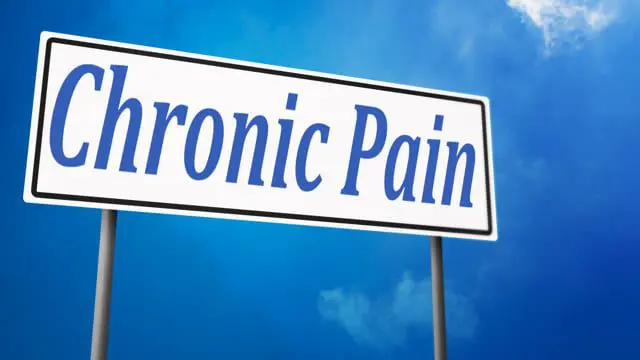Introduction to Bankruptcy
Quiebra is a legal process designed to help individuals and businesses eliminate or repay their debts under the protection of the federal bankruptcy court. For many, declaring bankruptcy is a daunting decision, but it can provide a fresh start for those overwhelmed by financial obligations. Understanding the different types of bankruptcy, such as Capítulo 7, Capítulo XIy Capítulo 13, and their specific requirements and consequences, is crucial for anyone considering this significant financial step.
Bankruptcy is not just about wiping the slate clean; it’s a complex legal procedure that involves assessing one’s financial situation, filing various forms, and often negotiating with creditors. The process aims to be fair to the debtor seeking relief while protecting the interests of creditors to the extent possible.
Tipos de quiebra
The most common forms of bankruptcy for individuals are Chapter 7 and Chapter 13. Quiebra del capítulo 7 allows debtors to discharge most unsecured debts, which means they are no longer legally required to pay them. However, this might involve the liquidation of the debtor’s assets to repay creditors. Quiebra del capítulo 13, on the other hand, enables individuals with a regular income to develop a plan to repay all or part of their debts over time, typically three to five years, without the need for asset liquidation.
For businesses struggling with debt, Quiebra del capítulo 11 provides an opportunity to reorganize and continue business operations. It offers a company a chance to restructure its financial framework, renegotiate debts, and optimize operations to return to profitability while keeping creditors at bay.
Navegar por el proceso de quiebra
The first step in filing for bankruptcy is to complete a credit counseling course from an approved agency. This course is designed to help you determine whether bankruptcy is truly necessary or if an informal repayment plan could be an alternative. Following counseling, the bankruptcy process involves preparing and filing a petition and schedules with the tribunal de quiebras in your jurisdiction.
This filing must include detailed information about your finances, including assets, debts, income, and expenses, and a statement of financial affairs. For personal bankruptcy filings under Chapter 7 or Capítulo 13, this will also include a proposed repayment plan if applicable.
La vida después de la quiebra
Post-bankruptcy life involves reestablishing financial stability and rebuilding your credit. It’s crucial to create a budget, start a savings plan, and carefully rebuild credit. Effective strategies include obtaining a secured credit card, making timely payments, and keeping credit balances low.
Casos prácticos o ejemplos
In a high-profile Quiebra del capítulo 11 case, a major retail corporation restructured its $5 billion debt after a drastic downturn in sales. The company successfully negotiated with creditors to convert a significant portion of the debt into equity in the company, allowing it to remain operational and avoid liquidation. This example illustrates how Chapter 11 can provide a lifeline to struggling businesses, allowing them to reorganize and emerge stronger financially.
Another case involved a personal Quiebra del capítulo 7 filed by an individual overwhelmed by medical debt and unsecured credit card liabilities. After filing, the court discharged the majority of their debts, allowing them a fresh financial start. However, the case also highlighted the individual’s loss of non-exempt property, showcasing both the benefits and sacrifices associated with this type of bankruptcy.
Análisis comparativo
Bankruptcy laws vary significantly across different countries, reflecting diverse legal philosophies and economic policies. For instance, in the United Kingdom, bankruptcy is more debtor-friendly, with debt discharge possible in as little as one year. In contrast, in the United States, discharge timelines and asset exemption laws vary by state, often making the process longer and sometimes more punitive.
Desglose detallado de las consecuencias jurídicas
The legal consequences of bankruptcy are profound. For individuals, a Chapter 7 bankruptcy remains on one’s credit report for up to 10 years, severely impacting the ability to obtain future credit, buy a home, or sometimes secure employment. Businesses undergoing Chapter 11 may retain their operations but must comply with stringent repayment plans and operational oversight, potentially affecting long-term business strategy and profitability.
Guía paso a paso con imágenes
- Asesoramiento crediticio: Start with a mandatory credit counseling session, which helps determine whether bankruptcy is the right option.
- Presentación de la petición: Prepare and file a petition along with your financial statements and proposed asset exemptions.
- Junta de Acreedores: Attend the 341 meeting where creditors can question the debtor about the debts and assets listed in the petition.
Visuals such as infographics can be very helpful in explaining these steps clearly and succinctly.
Tecnología y herramientas
Modern bankruptcy practices are supported by various technological tools. Online platforms allow for the electronic filing of bankruptcy petitions and documents, facilitating faster processing and better accuracy. Additionally, software for managing bankruptcy cases can help attorneys keep track of filing deadlines, document submissions, and court appointments, improving efficiency and compliance.
Elementos interactivos
An online calculator for assessing whether one qualifies for Chapter 7 or the potential payments under Chapter 13 can be incredibly beneficial. Additionally, interactive timelines could help individuals understand key milestones in the bankruptcy process.
Sección FAQ
Q: What are the alternatives to bankruptcy? A: Alternatives include debt consolidation, debt management plans, or informal negotiations with creditors.
Q: Can all debts be discharged in bankruptcy? A: No, certain debts like student loans, alimony, and child support are typically non-dischargeable.
Cambios y tendencias legislativas
Recent changes in bankruptcy laws include adjustments to income thresholds and exemption amounts to reflect current economic conditions. These changes are intended to make bankruptcy accessible to those who need it while preventing abuse of the system.
Consideraciones éticas
Ethically, attorneys must ensure that all information provided to the bankruptcy court is accurate and complete, avoiding any form of misrepresentation. They must also respect the sensitive nature of financial distress and provide counsel without prejudice.
Type of Attorney for This Type of Legality and Finding Them on Attorneys.Media
When seeking legal representation for bankruptcy, it is crucial to choose an attorney specializing in bankruptcy law. These attorneys have a deep understanding of the law’s nuances, are up-to-date with the latest legislative changes, and can navigate the complex landscape of creditor negotiations and court proceedings effectively.
On Attorneys.Media, prospective clients can watch videos where bankruptcy attorneys discuss their approach to handling bankruptcy cases. These videos provide insights into the attorney’s expertise and style, helping clients make informed decisions. When choosing an attorney, consider their experience with specific bankruptcy chapters and their track record with similar cases.
To find a suitable attorney on Attorneys.Media, filter your search to include only those attorneys who specialize in bankruptcy, and view their informational videos. Contact details are usually provided for direct inquiries, making it easier to schedule consultations and further discuss your case specifics.
Conclusión
While bankruptcy can offer relief and a path to financial recovery, it’s not a decision to be taken lightly due to its long-lasting impact on one’s financial status and credit. By understanding the nuances of different bankruptcy types and carefully planning the approach to and execution of the bankruptcy process, individuals and businesses can make informed decisions that lead to financial health and stability.








